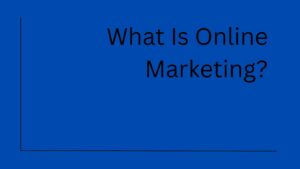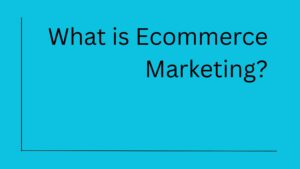Launching a product or growing a business is an exciting journey, but it can also be overwhelming, especially when you face the task of creating a marketing plan. For many entrepreneurs and marketers, the idea of sitting down and drafting a comprehensive marketing strategy can seem like a monumental task, one that’s overly complicated and time-consuming.
But the truth is, creating a solid marketing plan doesn’t have to be that difficult. In fact, if you keep things simple and focus on the right elements, you can create a plan that not only drives real results but also helps you avoid wasting money on ineffective campaigns.
So, how do you create a marketing plan that actually works? In this detailed guide, we’ll walk you through the essential steps you need to take to build a marketing plan that delivers results. We’ll keep things practical, actionable, and aligned with the current digital-first marketing landscape. No fluff, no jargon, just the strategies that matter.
Why is a Marketing Plan Essential?
Before we dive into the specifics of creating a marketing plan, let’s first understand why having one is crucial. A well-crafted marketing plan does more than just outline your promotional activities. It helps you:
Clarifies your marketing objectives: By defining your goals, target audience, and key messages, you ensure every marketing effort has a clear purpose and direction.
Maximizes your marketing ROI: Having a plan helps you allocate your budget effectively and focus on the channels and tactics that deliver the best results.
Provides measurable benchmarks: A marketing plan establishes clear metrics and KPIs so you can track progress and optimize your efforts.
Ensures consistent messaging: Your plan serves as a reference point to maintain brand consistency across all marketing channels and touchpoints.
Identifies your competitive advantage: A marketing plan helps you understand your position in the market and how to differentiate yourself from competitors.
Creating a marketing plan isn’t about getting every detail perfect from the start; it’s about establishing a strategic framework that guides your marketing decisions and helps you achieve your business goals more efficiently.
Now, let’s break down the key steps involved in creating an effective marketing plan.
How To Write & Create an Effective Marketing Plan in 9 Steps
Step 1: Define Your Marketing Goals and Objectives
The first step in creating a marketing plan is to establish clear, measurable goals. What do you want your marketing efforts to achieve? This might seem obvious, but many businesses jump into marketing tactics without defining what success looks like.
Your marketing goals should align with your overall business objectives and be specific enough to guide your strategy and measure results.
Types of Marketing Goals:
- Awareness goals: Increase brand recognition, reach new audiences, or improve brand perception
- Lead generation goals: Generate qualified leads, build email lists, or increase website traffic
- Sales goals: Drive conversions, increase revenue, or boost average order value
- Customer retention goals: Improve customer loyalty, increase repeat purchases, or reduce churn
Key Questions to Answer:
- What specific outcomes do you want from your marketing efforts?
- How will these goals support your overall business objectives?
- What metrics will you use to measure success?
- What’s your timeline for achieving these goals?
Example: Let’s say you’re looking to launch and promote a digital product, such as a course, PDF, guides or even a SaaS product. Your marketing goals might include: “Generate 500 qualified leads per month within 6 months, achieve 10,000 website visitors monthly, and maintain a cost per acquisition under $100.”
Setting clear, measurable goals ensures every marketing activity contributes to your bottom line and gives you benchmarks to evaluate your success.
Step 2: Identify Your Target Audience and Create Buyer Personas
Now that you know what you want to achieve, it’s time to understand who you’re trying to reach. Effective marketing starts with a deep understanding of your target audience. Who are they? What challenges do they face? Where do they spend their time? How do they make purchasing decisions?
Creating detailed buyer personas, semi-fictional representations of your ideal customers, helps you tailor your messaging, choose the right channels, and create content that resonates.
Key Questions to Answer:
- Who is your ideal customer? What are their demographics (age, gender, income, location) and psychographics (interests, values, pain points)?
- What challenges or problems are they trying to solve?
- Where do they get information? What social media platforms, websites, or publications do they follow?
- What’s their buying process? How do they research and make purchasing decisions?
- What objections might they have to your product or service?
Research Methods:
- Customer surveys and interviews: Talk directly to existing customers to understand their motivations and preferences
- Analytics data: Use Google Analytics, social media insights, and other tools to understand your audience’s behavior
- Social listening: Monitor social media conversations to understand your audience’s interests and pain points
- Competitor analysis: Study who your competitors are targeting and how they’re positioning their messages
Example: If you’re into marketing project management, one of your buyer personas might be “Startup Sarah,” a 32-year-old operations manager at a growing tech startup who struggles with team coordination, values efficiency and cost-effectiveness, and primarily researches solutions through Google searches and LinkedIn.
Understanding your audience at this level allows you to create highly targeted marketing campaigns that speak directly to their needs and motivations.
Step 3: Analyze Your Competition and Market Position
Before you can effectively position your brand, you need to understand the competitive landscape. Who else is competing for your target audience’s attention? What are they doing well, and where are the gaps you can exploit?
A thorough competitive analysis helps you identify opportunities, avoid saturated markets, and develop messaging that differentiates your brand.
Key Areas to Analyze:
- Direct competitors: Companies offering similar products or services to your target audience
- Indirect competitors: Companies solving the same problem with different solutions
- Content and messaging: What topics do they cover? What tone do they use? What value propositions do they highlight?
- Marketing channels: Where are they most active? What platforms drive their best engagement?
- Pricing and positioning: How do they position themselves in the market? What price points do they target?
Questions to Answer:
- Who are your main competitors, both direct and indirect?
- What marketing strategies are they using successfully?
- Where are the gaps in their approach that you could fill?
- How can you differentiate your brand from theirs?
- What unique value can you offer that they don’t?
Tools for Competitive Analysis:
- SEMrush or Ahrefs: Analyze competitors’ SEO strategies and paid advertising
- Social media monitoring: Track competitors’ social media activity and engagement
- Google Alerts: Stay updated on competitors’ content and news mentions
- Customer feedback: Read reviews of competitors’ products to identify pain points
This analysis will help you identify your unique market position and inform your messaging strategy.
Step 4: Develop Your Brand Messaging and Value Proposition
With a clear understanding of your goals, audience, and competition, it’s time to develop your core marketing messages. Your brand messaging should clearly communicate who you are, what you offer, and why it matters to your target audience.
Your value proposition is the foundation of all your marketing communications. It’s the unique value you provide that your competitors don’t.
Key Components of Effective Messaging:
- Brand promise: What can customers expect from your brand?
- Value proposition: What unique benefit do you provide?
- Key messages: 3-5 core messages that support your value proposition
- Proof points: Evidence that supports your claims (testimonials, case studies, data)
- Brand personality: The tone and style that reflects your brand’s character
Framework for Developing Your Value Proposition:
- Identify the problem: What specific problem does your product solve?
- Define your solution: How does your product solve this problem?
- Highlight your difference: What makes your solution unique or better?
- Quantify the benefit: What measurable value do you provide?
Example: For a social media management tool: “Help small business owners save 10 hours per week on social media management with our AI-powered scheduling and content creation platform so you can focus on growing your business instead of managing posts.”
Your messaging should be clear, compelling, and consistent across all marketing channels.
Step 5: Choose Your Marketing Channels and Tactics
Now comes the exciting part: deciding how you’ll reach your target audience. With countless marketing channels available, it’s important to choose the ones that will be most effective for reaching your specific audience with your budget and resources.
Digital Marketing Channels:
- Content Marketing: Blog posts, videos, podcasts, infographics
- Search Engine Optimization (SEO): Organic search visibility
- Pay-Per-Click (PPC) Advertising: Google Ads, Bing Ads
- Social Media Marketing: Organic and paid social media campaigns
- Email Marketing: Newsletters, automated sequences, promotional campaigns
- Influencer Marketing: Partnerships with industry influencers
Traditional Marketing Channels:
- Public Relations: Above and below the line targeting, such as Media outreach, press releases
- Events and Trade Shows: Industry conferences, networking events
- Direct Mail: Targeted physical mailings
- Print Advertising: Magazine, newspaper ads
Channel Selection Criteria:
- Audience presence: Where does your target audience spend their time?
- Message fit: Which channels best support your type of content and messaging?
- Budget requirements: What can you afford to invest in each channel?
- Resource needs: Do you have the skills and time to execute effectively?
- Competition level: How saturated is each channel with competitors?
Start with 2-3 channels that align best with your audience and goals, then expand as you gain experience and see results. Even further, it is best to choose the email channel for its straightforward approach. So learn how to write emails for a campaign, which appears to be a more direct way to reach the end user.
Step 6: Create Your Content Strategy
Content is the fuel that powers most modern marketing efforts. Whether it’s blog posts, social media updates, videos, or email campaigns, you need a strategic approach to creating content that attracts, engages, and converts your target audience.
Key Elements of a Content Strategy:
- Content themes: What topics will you cover that align with your audience’s interests and your business goals?
- Content types: What formats will you use (blog posts, videos, infographics, podcasts)?
- Content calendar: When and where will you publish content?
- Content workflows: Who will create, review, and publish content?
Content Planning Framework:
- Awareness stage content: Educational content that helps your audience understand their problems
- Consideration stage content: Solution-focused content that positions your offering as a viable option
- Decision stage content: Comparison content, case studies, and testimonials that help prospects choose you
- Retention stage content: Content that helps existing customers get more value from your product
Content Distribution Strategy:
- Owned media: Your website, blog, email list
- Earned media: PR coverage, customer reviews, social shares
- Paid media: Promoted posts, sponsored content, advertising
Remember, consistency is key. It’s better to publish quality content regularly than to create sporadic bursts of content.
Step 7: Set Your Marketing Budget and Resource Allocation
An effective marketing plan requires realistic budgeting. How much can you invest in marketing, and how will you allocate those resources across different channels and activities?
Budget Considerations:
- Total marketing budget: What percentage of revenue can you dedicate to marketing?
- Channel allocation: How will you split your budget across different marketing channels?
- Fixed vs. variable costs: What are your ongoing costs (tools, salaries) vs. campaign-specific costs?
- Testing budget: Reserve funds for experimenting with new channels or tactics
Common Budget Allocation Models:
- Percentage of revenue: Typically 5-15% of gross revenue for most businesses
- Competitive parity: Match your competitors’ estimated marketing spend
- Objective-based: Calculate budget needed to achieve specific goals
Resource Allocation:
- Internal team: What marketing activities will you handle in-house?
- External partners: What will you outsource to agencies, freelancers, or consultants?
- Tools and technology: What marketing tools and software do you need?
- Content creation: Budget for graphic design, video production, or writing
Track your marketing spend carefully and be prepared to reallocate budget based on what’s working best.
Step 8: Establish Metrics and Measurement Systems
You can’t improve what you don’t measure. Establishing clear metrics and measurement systems is crucial for understanding whether your marketing efforts are working and where you need to make adjustments.
Key Marketing Metrics by Goal:
Awareness Metrics:
- Brand awareness surveys
- Social media reach and impressions
- Website traffic and unique visitors
- Search volume for branded terms
Engagement Metrics:
- Social media engagement rates
- Email open and click-through rates
- Time spent on website
- Content shares and comments
Lead Generation Metrics:
- Number of qualified leads
- Cost per lead
- Lead-to-customer conversion rate
- Marketing qualified leads (MQLs)
Sales Metrics:
- Customer acquisition cost (CAC)
- Return on marketing investment (ROMI)
- Revenue attributed to marketing
- Customer lifetime value (CLV)
Tools for Measurement:
- Google Analytics: Website traffic and conversion tracking
- Social media analytics: Platform-specific insights
- Email marketing platforms: Campaign performance metrics
- CRM systems: Lead and customer tracking
- Marketing automation tools: Multi-channel attribution
Set up regular reporting schedules (weekly, monthly, quarterly) to review performance and make data-driven decisions.
Step 9: Plan for Marketing Campaign Optimization and Iteration
Your marketing plan should be a living document that evolves based on results and changing market conditions. The most successful marketers are constantly testing, learning, and optimizing their approaches.
Optimization Areas:
- A/B testing: Test different versions of ads, emails, landing pages, and content
- Channel performance: Shift budget toward highest-performing channels
- Audience refinement: Adjust targeting based on who responds best to your messaging
- Message testing: Try different value propositions and calls-to-action
Regular Review Schedule:
- Weekly: Review key metrics and campaign performance
- Monthly: Analyze overall progress toward goals and make tactical adjustments
- Quarterly: Conduct comprehensive review and plan major strategy changes
- Annually: Complete strategic review and planning for the following year
Key Questions for Optimization:
- What’s working better than expected? How can you do more of it?
- What’s underperforming? Should you adjust or eliminate it?
- What new opportunities have emerged in your market?
- How have your customers’ needs or behaviors changed?
Stay flexible and be willing to pivot when data shows a better approach.
Conclusion
Creating an effective marketing plan comes down to understanding your goals, knowing your audience, and choosing the right mix of channels and tactics to reach them. The most successful marketing plans are those that are clear, measurable, and adaptable.
Remember, a marketing plan is your strategic roadmap. It doesn’t need to be perfect, but it should give you clear direction and a way to measure progress. The key is to start with solid foundations, execute consistently, and continuously optimize based on real data and results.
Your marketing success lies in taking action, not in waiting for the perfect plan. Start with what you know, test your assumptions, and refine your approach as you learn what works for your specific business and audience.
Ready to create your marketing plan? The framework is here now; it’s time to put it into action and start driving real results for your business!






1 thought on “How to Create a Marketing Plan: A Step-by-Step Guide”
Hello,
While this post wasn’t quite what I expected, I can see you have a passion for the topic. I think if you focused more on constructive solutions on creating a business plan instead of just highlighting problems, your work would be very beneficial to readers. I hope to see more of your work in the future.